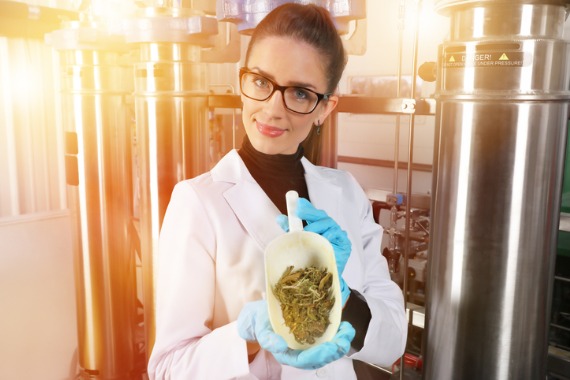Future Proof your Cannabis Manufacturing Plant
The future looks bright for cannabis manufacturers. As legalization expands and the cannabis industry booms, experts project the market to rack up a staggering $43 billion by 2025.
While the promise of incredible future gains is exciting for cannabis business owners, the future can be a double-edged sword. These market projections are also driving the development of new technologies in the cannabis industry – which inadvertently creates significant problems for cannabis manufacturers.
The Problem of the Future
Put simply, the speed of technological development outpaces many other business processes, so by the time some businesses adopt the latest technologies, it’s time for another.
On one hand, this is an exciting trend for businesses that deploy emerging technologies to solve problems, lower costs, and increase productivity. On the other hand, it means that technological investments will become obsolete faster than ever before.
Coupled with the dire need to adopt more environmentally friendly technologies in all sectors, businesses today face difficult decisions when it comes to predicting the ROI from their technology investments. This is particularly true for companies in emerging industries, like cannabis manufacturing, which relies on technology to perform basic operations.
Preparing for the Future of Cannabis Manufacturing
Cannabis manufacturers need to be prepared to face the inevitable obsolescence of current infrastructure and the shift to greener technologies that the future holds in store. With the right tech strategy, cannabis manufacturers can mitigate the risk posed by rapid tech developments and the need to integrate green tech into operations.
By focusing operations on the following key areas, cannabis manufacturers can ensure that their enterprises are not only ready to face the challenges of the future but are optimized to take full advantage of them:
- Energy Management – like all industrial producers, cannabis manufacturing facilities require substantial continuous energy to run their operations. This energy is often directly supplied by tapping into one of the national electrical grids. As noted by anthropologist Gretchen Bakke, the U.S. electrical grid is “aging and unstable,” incapable of taking the nation into a new energy future. With cannabis manufacturing expanding – demanding more energy as facilities scale – the strain on unreliable electrical infrastructure will increase, and cannabis manufacturers will face mounting pressure to reduce energy consumption.
One possible solution for this issue is the integration of Cogeneration Energy Systems, also called Combined Heat and Power (CHP). CHP technologies are designed to capture heat typically lost in the energy production process and utilize this thermal energy to further stretch heating/cooling resources. Technologies like these are cost-effective solutions for cannabis manufacturing energy management.
- Pollutants – contrary to common impressions, cannabis farming itself is not inherently green. The terpenes present in cannabis are naturally released during the plant’s life cycle (as well as during cannabis manufacturing processes), and when emitted in large quantities, these terpenes can combine with combustion gases to create ozone pollution.
Recent research in Colorado has discovered that this issue is exacerbated by the proximity of growing/manufacturing facilities to urban industrial areas. While the Federal classification of cannabis currently prevents the Environmental Protection Agency from officially studying cannabis emissions, cannabis manufacturers should expect increased pressure to control Volatile Organic Compound (VOC) pollution as the industry expands.
- Quality by Design – the days when cannabis consumers had no choice but to simply hope their purchase was a quality product quickly became a bad memory. Legalization protects consumers, providing them with the right to expect and demand quality from cannabis products.
Cannabis manufacturers must implement a Quality by Design (QbD) manufacturing strategy, where the excellence of cannabis products is designed directly into the manufacturing strategy. Developed initially for the pharmaceutical industry, this design strategy ensures that consumable products are superior in value and helps ensure they are always safe for the end consumer.
- Risk Assessment – if the past few years of economic uncertainty have proven anything, businesses need a better way to anticipate and mitigate risks. While the increased natural disasters may prove impossible to overcome in some areas, cannabis organizations improve their risk landscape by implementing a modern Enterprise Resource Planning (ERP) solution to accumulate, manage, and analyze operational/economic data. Advanced cannabis ERP solutions integrate cutting-edge developments in AI to perform data analysis that humans could only dream of, providing industrial cannabis businesses with the intelligence they need to forecast accurately, optimize facilities, and mitigate future risks.
Learn 5 Things Cannabis Companies Need from an ERP Solution
A Better Tomorrow
While the future of cannabis holds promise, cannabis manufacturers should protect themselves from what the future will inevitably bring. With the right operational strategies in place, cannabis manufacturers can move forward into the industry’s future with confidence.






